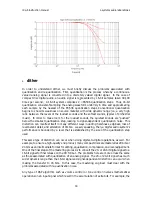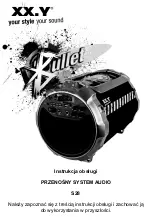
rdq-6 instruction manual
z-systems audio laboratories
24
digital signal processing when only small-wordwidth fixed-point processors were available
and still holds true today, even for larger-precision floating-point processors. Other filter
architectures, such as the wave structure, the cascade structure, and the lattice-ladder
structure arose in an attempt to make better filters.
A logical question arises. Is there any way to derive a filter structure that can produce the
guaranteed minimum roundoff noise power and minimum sensitivity to coefficient
quantization given a fixed, known wordwidth with which to work? The answer is in the
affirmative, although it is complicated to derive or even explain (the interested reader is
referred to [2] or [3]). Suffice it to say that it is possible to derive an architecture that is optimal
in the above sense. There are several solutions to this problem, and they differ slightly as a
function of the optimality criteria they use.
The solution we have derived has a number of useful properties. Most significantly, our
architecture realizes the absolute minimum possible roundoff noise power and sensitivity to
coefficient quantization. Equally interesting, our architecture always produces this minimum
roundoff noise power, independent of gain, center frequency, or bandwidth. For certain
highly reasonable filters (e.g. center frequency of 28 Hz, cut of 10 dB, with a Q equal to 8), the
roundoff noise power of our architecture is as much as 4 or 5 orders of magnitude better!
1.
Oppenheim, A. V., and Schafer, R. W., Discrete-Time Signal Processing, Prentice Hall,
Englewood Cliffs, NJ, 1989.
2.
Zelniker, G. S., and Taylor, F. J., Advanced Digital Signal Processing: Theory and Applications,
Marcel Dekker, NY, NY, 1994
3.
Roberts, R. A., and Mullis, C. T., Digital Signal Processing, Addison-Wesley Publishing
Company, Reading, MA, 1987.








































